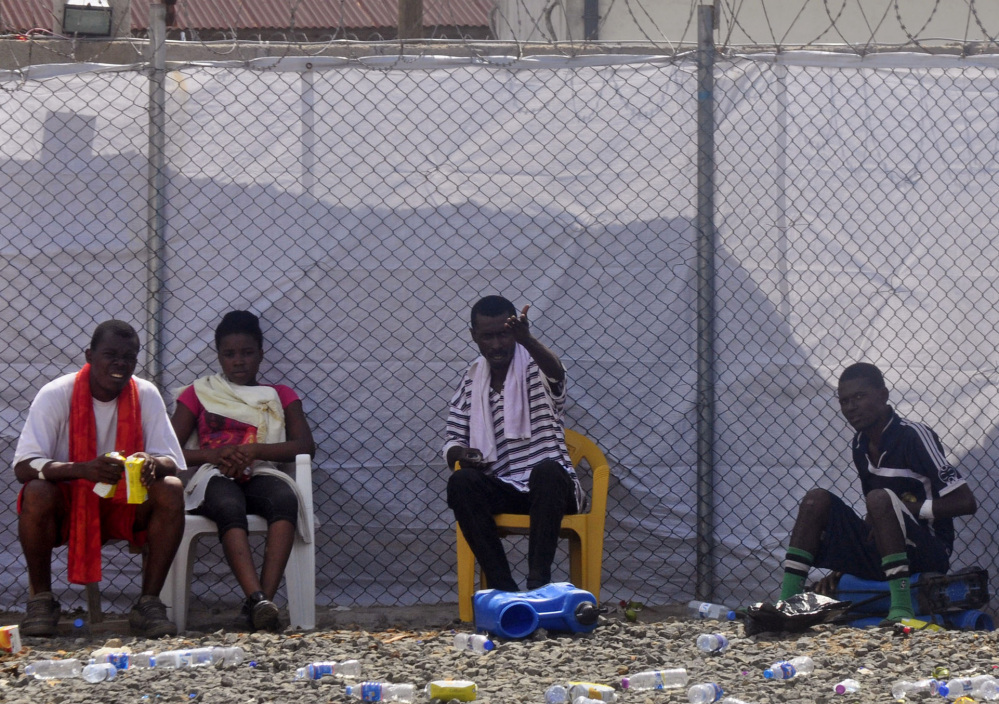DAKAR, Senegal — The rate of new Ebola infections in Liberia appears to be declining and could represent a genuine trend, the World Health Organization said Wednesday, but the epidemic is far from over.
The disease is still raging in parts of Sierra Leone and there is still a risk that the decline in Liberia won’t be sustained, Dr. Bruce Aylward, an assistant director-general for WHO, warned reporters.
Several times during the outbreak officials have thought the disease’s spread was slowing, only to surge again later. Officials have often blamed those false lulls on cases hidden because people were too afraid to seek treatment, wanted to bury their relatives themselves or simply weren’t in contact with authorities.
But now there are some positive signs: There are empty beds in treatment centers in Liberia and the number of burials has declined. There may be as much as a 25 percent week-on-week reduction in cases in Liberia, Aylward said.
Throughout the Ebola outbreak, WHO has warned that its figures have been incomplete and the number of cases are likely vastly underreported. That is still a concern, Aylward said, but the trend nonetheless appears to be real.
DATA SUBJECT TO DEBATE
“The epidemic (in Liberia) may be slowing down,” he said from Geneva. The slowdown could be attributable to a rapid increase in safe burials of Ebola victims, an uptick in the number of sick people being isolated and major public awareness campaigns on how to stop transmission.
So far, more than 13,700 people have been sickened in the outbreak, which has hit Liberia, Guinea and Sierra Leone hardest. That figure, released Wednesday by the World Health Organization, includes cases from earlier in the outbreak that were recently found in patient databases but had never been reported.
In yet another sign of the difficulty of providing real-time, accurate data, the WHO figures showed that Liberia’s total death toll dropped to around 2,400 deaths from the 2,700 reported a few days ago. Dan Epstein, a spokesman for the agency, said that was because laboratory investigations showed that cases previously thought to be Ebola were not.
In all, the disease is believed to have killed nearly 5,000 people.
ANOTHER CREST POSSIBLE
Ebola outbreaks come in waves, warned Benoit Carpentier, a spokesman for the International Federation of the Red Cross. Red Cross figures show deaths are still increasing outside Monrovia, he noted.
It’s possible that at least some of the decline is because cases are being hidden – a phenomenon that has plagued the response to the outbreak since the beginning, said Ella Watson-Stryker, a health promotion manager for Doctors Without Borders in Liberia.
She said her team has heard of people doing their own burials in order to avoid a government order that Ebola victims in Monrovia be cremated; the government has also cited fear of cremation, a practice deeply at odds with Liberian tradition, as a reason beds are empty in treatment centers. Watson-Stryker added that people may be staying away from such centers because they are still confused about what kind of care is given at them.
However the decline is characterized, Aylward said the response must not relax.
“This hasn’t dropped off a cliff. … There’s a huge risk it wouldn’t be sustained,” said Aylward. “It would be a huge mistake … to think we can scale down the response.”
Instead, experts should redouble their efforts to track all of the people with whom the sick have come into contact – a task that has been nearly impossible in many parts of the outbreak because of the sheer number of infections.
There’s also tremendous work still to be done outside Liberia.
The western areas of Sierra Leone, near the capital, have seen a particularly steady increase in cases lately.
“We are in a crisis situation, which is going to get worse,” said Palo Conteh, the newly appointed head of Sierra Leone’s national Ebola Response Center. “Ebola is right ahead of us and it is running fast.”
He urged areas of the country experiencing increases in cases to follow the example of areas where the disease’s spread is declining: avoid contact with the sick, bury the dead properly and seek quick treatment for fevers.
Copy the Story LinkSend questions/comments to the editors.



Success. Please wait for the page to reload. If the page does not reload within 5 seconds, please refresh the page.
Enter your email and password to access comments.
Hi, to comment on stories you must . This profile is in addition to your subscription and website login.
Already have a commenting profile? .
Invalid username/password.
Please check your email to confirm and complete your registration.
Only subscribers are eligible to post comments. Please subscribe or login first for digital access. Here’s why.
Use the form below to reset your password. When you've submitted your account email, we will send an email with a reset code.